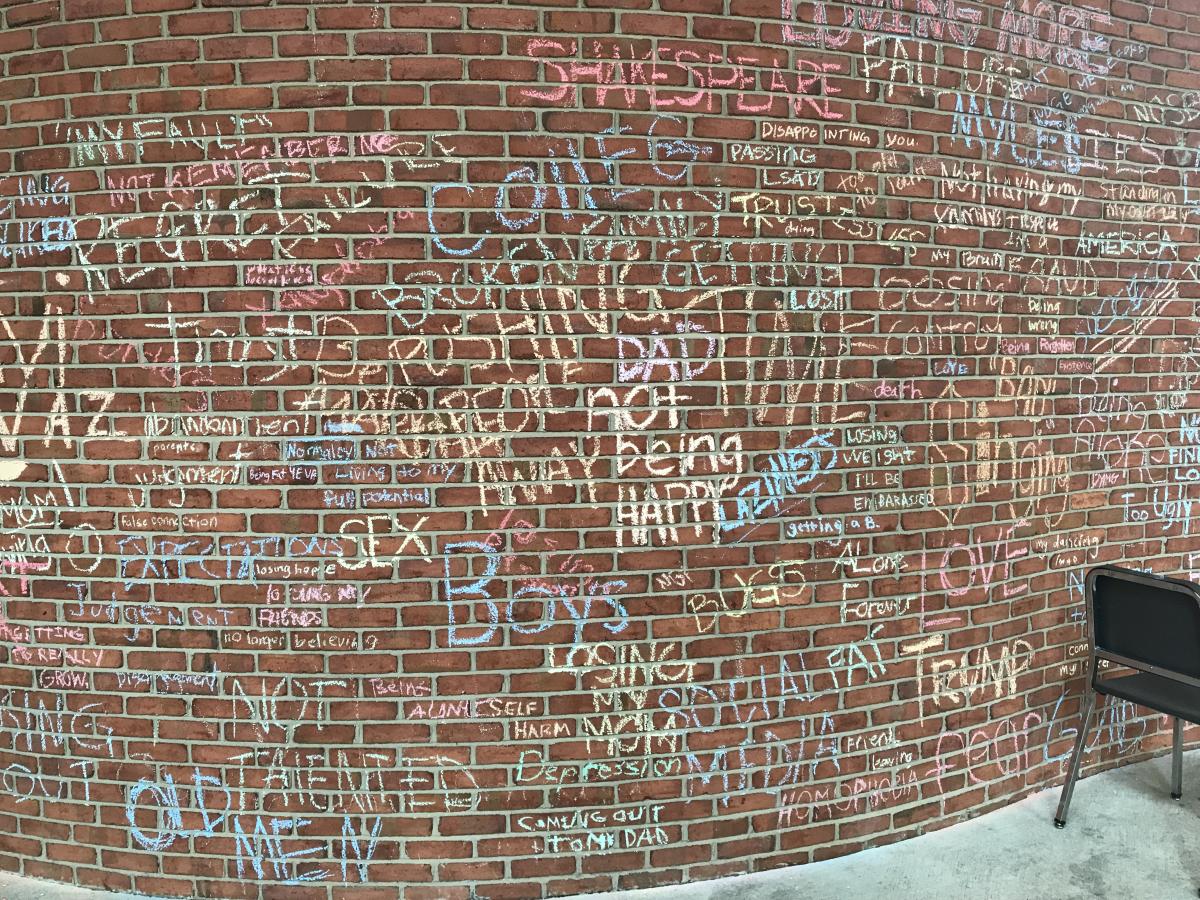Young artists in Winston-Salem are writing down the things they're afraid of, and in the process, making something beautiful.
Bright shades of colored chalk cover a large brick wall. It looks playful at first glance, a reminder of childhood, but it's much more than that.
“I put…mental health. Mental health can be a very personal experience and journey,” says Isabel Van Natta.

That's one her deepest fears. She's nineteen years old and from Miami, Florida. Her message is written alongside those of nearly 90 other students from around the world. They're part of a summer artist residency at Wake Forest University called The Performing Arts Project. Creating the wall was one of their first activities as a group.
“It was very relieving to put it on the wall, and something that really helped was seeing lots of different people put anxiety or OCD or different kinds of things...it made me feel a lot less alone.”
Loneliness itself is written several times on the wall along with, "never knowing my worth," "not getting into college," "falling out of love."
Students could write as many fears as they wanted. Mia Pak from Monterey, California, added several of her own.
“I think the last one I wrote was my mind," she says. "I remember writing it in haste and then stepping back and being jarred at how bright it was. I kind of thought to myself, 'should have made it smaller, should have picked a different color.' But I think it's really cathartic to write your inner demons and see if anyone else is feeling the same way.”
The idea for the wall came from Artistic Director Jonathan Bernstein and a picture he saw online. It was from a small Midwestern town that had its own fear wall that was erased daily.
Bernstein's goal is to cultivate the creativity of young artists, and that requires vulnerability.

“One of the primary functions of art itself is to try to, every day, cure loneliness just a smidge," he says. "And the more personal and vulnerable one is in one's art, then there are people out there, you hope, who feel, 'Oh wait, that's not just me.'”
It was a bonding opportunity for students. But it was also open to the public. For three weeks, there was a bucket of chalk at the base of the wall, inviting those who passed by to make their own contribution.
“That in and of itself is a nice lesson for our students, that it's not a little bunker or sanctuary whereby we get to just escape the world or hide out, but that we are part of a larger conversation, culturally and otherwise.”
The wall kept growing, but it wasn't created to stay there forever.
At the end of their three-week residency, the students gathered late one Saturday night. They hug and have parents take their picture, smiling in front of the wall. It's time to erase their fears.
With sopping sponges, they tackle one word at a time. And pretty soon someone with a hose makes their job a whole lot easier. The crowd erupts into cheers.

Isabel van Natta is beaming as she scrubs.
“It's so rewarding…it just feels so collaborative every step of the way," she says. "It just feels like we could take on anything. We're like superheroes.”
For nineteen-year-old Parker Robertson, it takes some effort to clean his portion.
“I purposely wrote mine on there extremely hard," he says. "I carved it in because it was deep, and to scrub it off took the work.”
With every student cleaning, it still takes a while to clear the wall. Eventually though, it's finally bare. That process is what Robertson will take with him. Everyday, he says, is about scrubbing that fear.
300x250 Ad
300x250 Ad
